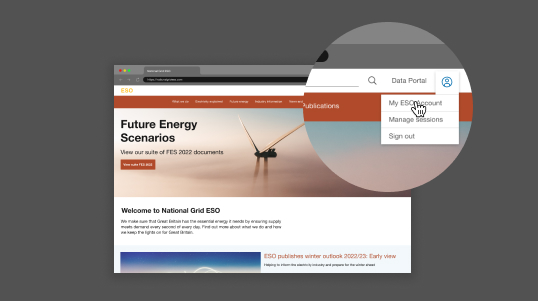We are now trialling a new Local Constraint Market (LCM) to access new sources of flexibility to help manage one of our most constrained boundaries.
The anticipated growth in renewable generation in Scotland is increasing power transfer across the Scottish boundaries, which are forecast to increase constraints at or above the B6 boundary and ultimately costs to the end consumer.
The B6 boundary separates the transmission network at the SP Transmission and National Grid Transmission interface running roughly along the border between Scotland and England.
We have committed as part of the ESO 5-Point plan to deliver a Local Constraint Market to help tackle the rising constraint costs at the B6 boundary.
Taking the learnings from the delivery of the Optional Downward Flexibility Management (ODFM) service, we’re keen to develop a market that facilitates access to new providers of flexibility and provide competition to the Balancing Mechanism – our existing market for the majority of transmission constraint management.
We have now contracted a 3rd party platform provider to manage the end-to-end process and provide engagement and information for our flex providers.
Trials are now under way with our 3rd party platform provider Piclo leading the onboarding, registration and asset qualification process.
If you can participate in our trials ongoing through Q2 please register to get information on LCM provided by Piclo.
If you have registered with Piclo and still have questions after reviewing the materials, please email us using the link below.
The LCM team continues to seek input from our customers and industry stakeholders. Throughout the design we used two light-touch consultations to capture feedback and share improvements to ensure the LCM service makes the best possible use of our stakeholders needs and insights.

Consultation documents
If you are a stakeholder for the service and still have questions our LCM platform provider cannot help you with, please email David Phillips, Market Change Delivery team: [email protected].
Sample of Scotland constraint BM prices
The two documents below should be read together - please review the FAQ before the "Scottish B6-B4 constraint BM price points 2020-23" document. The purpose is to provide new entrants to the emerging LCM market with improved historical information.
As the LCM in Scotland is new, we are provisionally offering some data on past BM constraint actions to help LCM providers to compete with the substantial volumes already available at BM prices.
This is a provisional sample of past data. As a prudent operator, the ESO must take into account many factors in determining the most appropriate markets, units and actions.
This shows the potential catchment areas for the Local Constraints Market in Scotland.
The two areas show how assets at different locations can register to ease constraints each the SCOTEX (B6) and more northern SSE-SP2 (B4) boundaries:
- Both areas - the northern, pink-shaded and southern (white) areas - can ease SCOTEX
- When only the northern SSE-SP2 boundary is constrained, only the northern pink areas can bid into competitions to ease this boundary.

24 October 2023: new pricing report on BM actions in Scotland and final trials for LCM.
Thank you to all our stakeholders for supporting the ongoing final stages of Local Constraint Market (LCM) trials.
Market trials - From today, the LCM trials will only consider bids for acceptance which enable LCM to be more cost effective than the Balancing Mechanism (BM). In line with operational conditions, only bids that deliver savings against the BM can be dispatched.
LCM transparency report on BM Pricing in Scotland - We have listened to LCM provider queries about the present BM actions and what it would take for the LCM to make savings for the end-consumer. ESO has responded, and draw your attention to our new FAQ and a sample of BM prices on selected days since 2020 when Scottish (B6/B4) constraints were more active. It is aimed at LCM stakeholders, and includes answers to questions such as:
- BM data can be complex to analyse. What prices do our assets try to beat?
- Can you clarify what ESO needs to be able to make consumer savings?
The FAQ and report can be found under "sample of Scotland constraint BM prices" in the document library tab on this page. A list of contacts are given for more information in the FAQ.
LCM Competition qualification is now open
Thank you to all who have registered for trials. The competition to qualify assets is now open, and you can still register for early trials. Go to PicloFlex below to see the regions for LCM Trials, and click on LCM Qualification to get details and access the Service Terms.
First-time registration for LCM
Q&A summary
Thank you to all LCM stakeholders who are considering joining in the new Local Constraint Market. Please find a Q&A summary of how we responded to market feedback and continue to develop the new service.
Previous events
Watch the recorded presentations from the event by pressing the play icon on each image or download material from each session using the link below each image.
We have updated updated our Q&A document, which now includes all your questions from the webinar on 16 January.
Futures and fairer access webinar - 16 January 2024
On 16 January we hosted the futures and fairer access webinar, where we gave an update on the service progress to date, future opportunities with the service, and ending with a Q&A session.

Further enquiries
Get in touch with the right team within Balancing Services, who are on hand to answer any questions you may have.


